
Concept explainers
(a)
Interpretation:
The curved arrow mechanism, for base catalyzed exchange of hydrogen
Concept introduction:
A carbonyl group has
Answer to Problem 22.74AP
The curved arrow mechanism for base catalyzed exchange of hydrogen
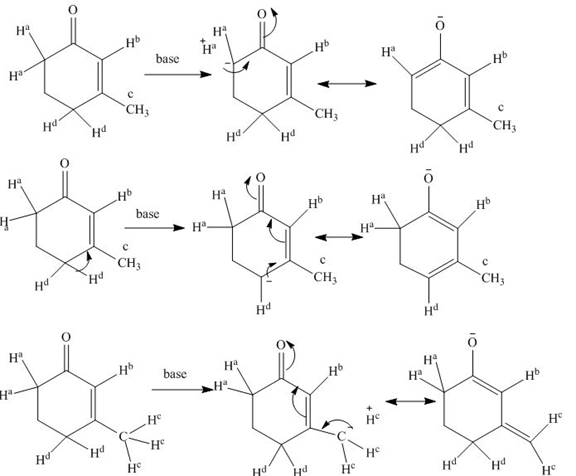
Explanation of Solution
The structure of compound is given below.
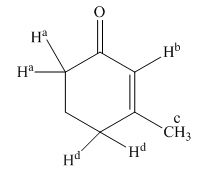
Figure 1
When a base is present in the medium, it easily removes the
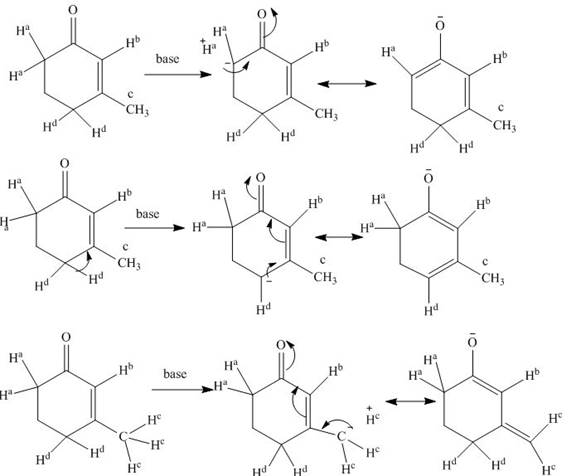
Figure 2
The base catalyzed exchange of hydrogen
(b)
Interpretation:
The less acidic character of
Concept introduction:
The
Answer to Problem 22.74AP
The proton,
Explanation of Solution
The
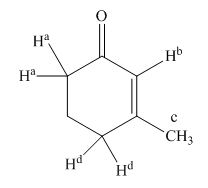
Figure 3
The
(c)
Interpretation:
The mechanism for exchange of
Concept introduction:
In presence of the acid or base, the enone compounds remain in equilibrium with their isomers. Due to this, acidity of
Answer to Problem 22.74AP
The isomer
Explanation of Solution
The equilibrium of isomers,
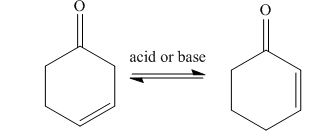
Figure 4
The
The reaction mechanism is shown in figure below.

Figure 5
The
(d)
Interpretation:
The hydrogen that is replaced by deuterium in sex hormone, testosterone is to be identified.
Concept introduction:
The
Answer to Problem 22.74AP
The hydrogen at position “a” in vicinity to carbonyl carbon can be exchanged for deuterium in
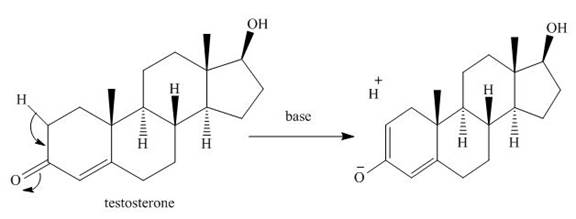
Explanation of Solution
The structure of sex hormone testosterone is given below.
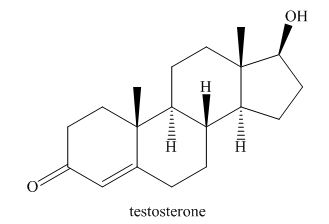
Figure 6
The hydrogen present at position “a” can be exchanged with deuterium, in sex hormone testosterone. This hydrogen, being at
The mechanism for the same can be shown as given below.

Figure 7
The
Want to see more full solutions like this?
Chapter 22 Solutions
Organic Chemistry Study Guide and Solutions
- How many hydrogen atoms are connected to the indicated carbon atom?arrow_forwardIdentify the compound with the longest carbon - nitrogen bond. O CH3CH2CH=NH O CH3CH2NH2 CH3CH2C=N CH3CH=NCH 3 The length of all the carbon-nitrogen bonds are the samearrow_forwardIdentify any polar covalent bonds in epichlorohydrin with S+ and 8- symbols in the appropriate locations. Choose the correct answer below. Η H's+ 6Η Η Η Η Η Ηδ Η Ο Ο HH +Η Η +Η Η Η -8+ CIarrow_forward
- H H:O::::H H H HH H::O:D:D:H HH HH H:O:D:D:H .. HH H:O:D:D:H H H Select the correct Lewis dot structure for the following compound: CH3CH2OHarrow_forwardRank the following compounds in order of decreasing boiling point. ннннн -С-С-Н . н-с- ННННН H ΗΤΗ НННН TTTĪ н-с-с-с-с-о-н НННН НН C' Н н-с-с-с-с-н НН || Ш НННН H-C-C-C-C-N-H ННННН IVarrow_forwardRank the following compounds in order of decreasing dipole moment. |>||>||| ||>|||>| |>|||>|| |||>||>| O ||>>||| H F H F H c=c || H c=c F F IIIarrow_forward
- choose the description that best describes the geometry for the following charged species ch3-arrow_forwardWhy isn't the ketone in this compound converted to an acetal or hemiacetal by the alcohol and acid?arrow_forwardWhat is the approximate bond angle around the nitrogen atom? HNH H Harrow_forward
- OH 1. NaOCH2CH3 Q 2. CH3CH2Br (1 equiv) H3O+ Select to Draw 1. NaOCH2 CH3 2. CH3Br (1 equiv) heat Select to Edit Select to Drawarrow_forwardComplete and balance the following half-reaction in acidic solution. Be sure to include the proper phases for all species within the reaction. S₂O₃²⁻(aq) → S₄O₆²⁻(aq)arrow_forwardQ Select to Edit NH3 (CH3)2CHCI (1 equiv) AICI 3 Select to Draw cat. H2SO4 SO3 (1 equiv) HO SOCl2 pyridine Select to Edit >arrow_forward
